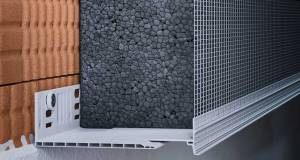
- Marketplace
- Posted
Design your MVHR for a pollution-free home — Solarcrest
Leading ventilation supplier Solarcrest has advised anyone specifying a mechanical ventilation with heat recovery (MVHR) system to ensure it is properly designed to deal with local air pollution issues.
This article was originally published in issue 33 of Passive House Plus magazine. Want immediate access to all back issues and exclusive extra content? Click here to subscribe for as little as €10, or click here to receive the next issue free of charge
“With MVHR it’s important to consider acoustics, hygiene, longevity and functionality, but if you want pollution-free air you also need to add advanced filtration to your wish list, as well as extra fan power to compensate for the air resistance those �filters create,” Eliot Warrington of Solarcrest told Passive House Plus.
Growing concern about the health e�ffects of airborne particulate matter (PM2.5) and NOx pollution from traffic fumes have increased demand for MVHR, as it’s the only ventilation system that can properly filter incoming air, Warrington said.
Most MVHR units come with a basic G4 ‘debris’ filter that Warrington said should normally be vacuumed every three months and replaced annually. This collects larger airborne particles like leaves, insects, dust and muck. “Unfortunately, a G4 filter doesn’t stop the micro particles that do the most damage when inhaled. It certainly won’t stop NOx gasses,” Warrington said.
“To stop most PM2.5 micro particles you need an F7 filter. It won’t stop them all but it’ll reduce them to a safe level. To stop NOx gasses from vehicle emissions you also need an activated carbon filter.”
“Most manufacturers offer a G4 to F7 upgrade, but that involves swapping the G4 for an F7, which means the F7 microfilter is stopping larger debris as well as harmful particles 36 times smaller than a grain of sand. It’s going to get clogged in no time at all and it’s difficult if not impossible to vacuum. What you need is an F7 filter for tiny stuff as well as a sacrificial G4 to protect it, and a machine designed to work with both— potentially a NOx filter too if your property is anywhere near a road.”
“You’re also going to need to size the fan unit accordingly. A G4, F7 and NOx filter adds almost as much static pressure as the rest of the ducting combined. Needless to say, there’s more to designing MVHR than simply drawing lines on your floor plan.”
Related items
-
 New Ejot profile cuts thermal bridging losses by 25mm insulation equivalent
New Ejot profile cuts thermal bridging losses by 25mm insulation equivalent -
 Build Homes Better updates Isoquick certification to tackle brick support challenge
Build Homes Better updates Isoquick certification to tackle brick support challenge -
 Ecological Building Systems expands UK and Irish straw panel construction with EcoCocon deal
Ecological Building Systems expands UK and Irish straw panel construction with EcoCocon deal -
 Focus on better buildings, not better spreadsheets
Focus on better buildings, not better spreadsheets -
 MBC offers total passive house envelope solutions
MBC offers total passive house envelope solutions -
 Historic Dublin building retrofitted with cutting edge insulation
Historic Dublin building retrofitted with cutting edge insulation

